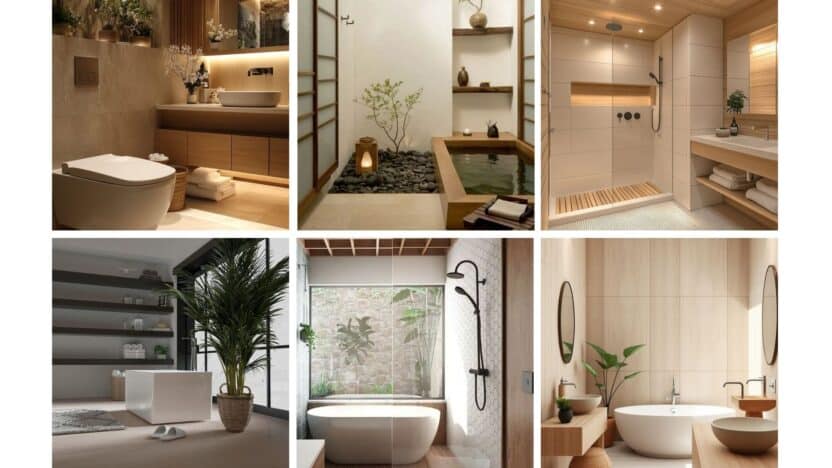
Japanese bathroom design is like a finely crafted piece of art that seamlessly blends Eastern aesthetics with functional needs. Within a limited footprint, it creates a tranquil, comforting bathing environment rooted in harmony and nature. The core philosophy revolves around the concepts of “wa” (harmony) and a deep connection with the natural world, transforming bathing from a routine activity into a soul-soothing ritual.
Philosophy Behind Japanese Bathroom Design: Nature, Simplicity & Ritual
Inspired by Nature
Nature is central to Japanese bathrooms. Designers often incorporate natural materials such as wood, stone, and indoor plants to evoke the feel of a miniature garden indoors. Hinoki or cypress wood is commonly used, releasing a calming forest scent that promotes relaxation. Natural stone or stone-look tiles on the floor, paired with modest potted plants, reflect a deep cultural affinity for nature and simplicity.
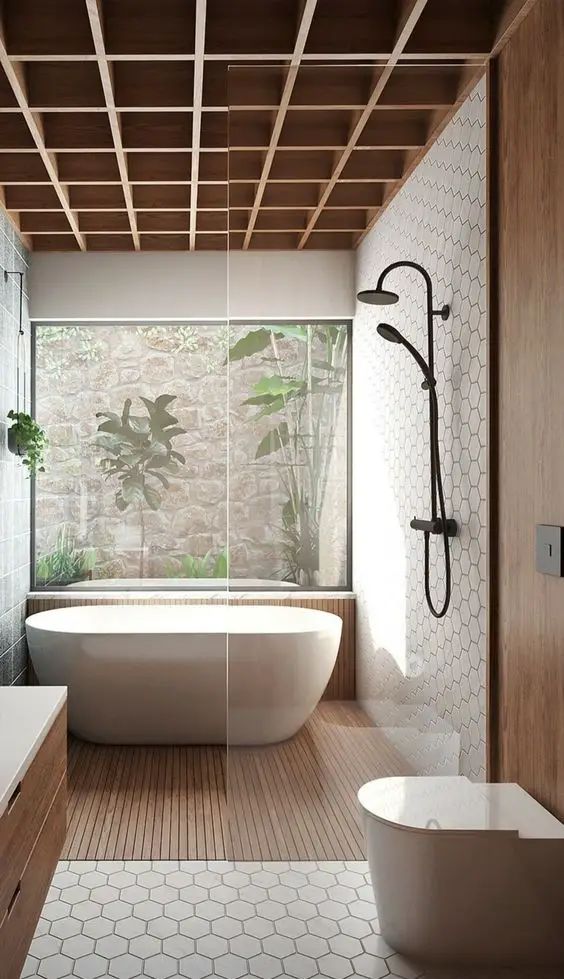
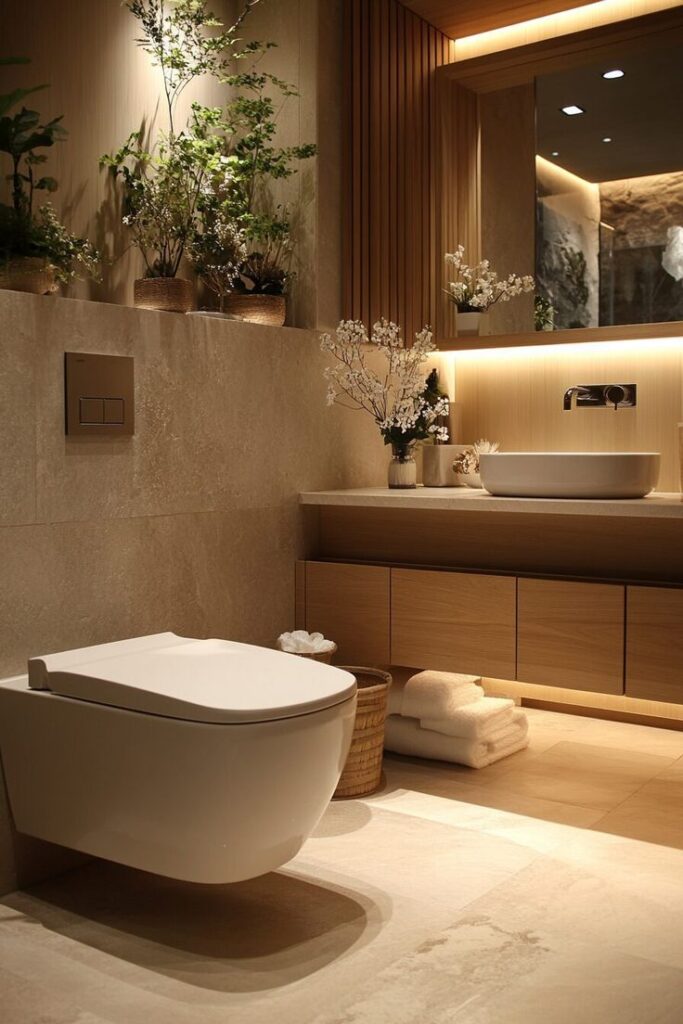
The Art of Minimalism
Wabi-sabi, the Japanese concept of beauty in imperfection and simplicity, plays a significant role. Decorations are minimal, layouts are clean, and the color palette leans toward soft, organic tones like light wood and off-white. Everything has its place, allowing room for the mind to rest. This minimalism isn’t just aesthetic but fosters mental clarity during everyday rituals.
Bathing as a Ritual
In Japan, bathing is seen as more than hygiene; it’s a ceremonial act of renewal. A traditional bathroom layout includes a changing area, a washing station, and a soaking tub. Users first clean themselves before entering the tub, which is reserved for relaxation. While modern bathrooms may streamline this process, the fundamental sequence—cleanse before soak—remains a cultural constant.
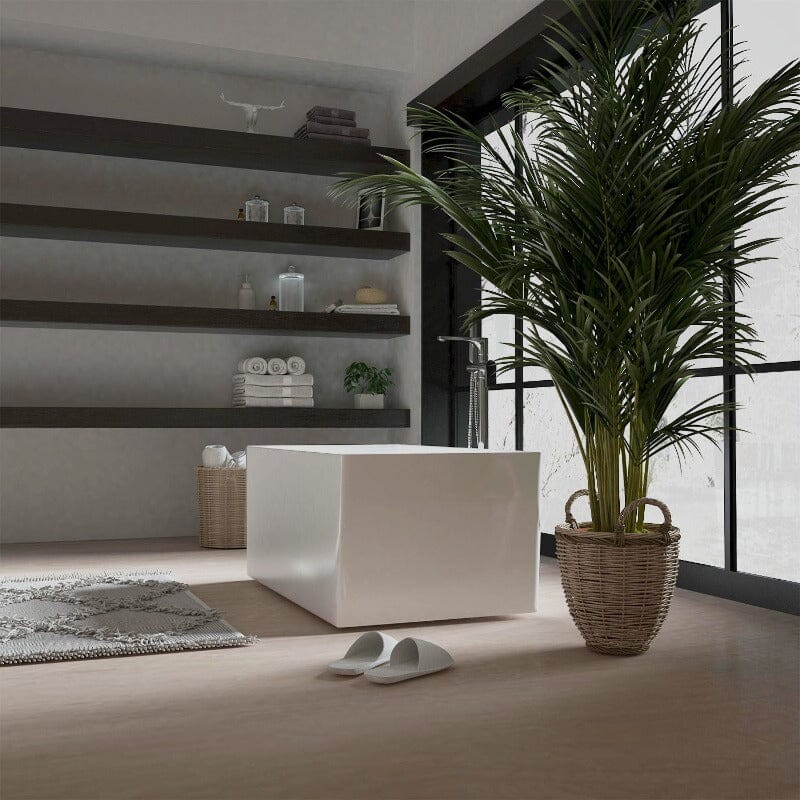
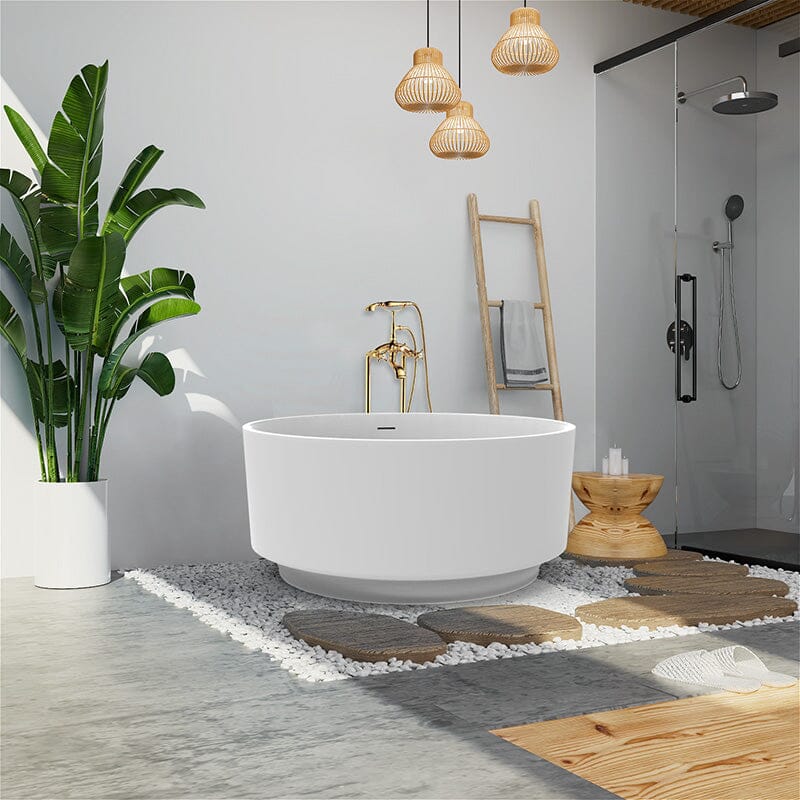
Materials That Marry Tradition with Modern Utility
1. Japanese Bathtubs: Balancing Tradition and Innovation
- Traditional Wooden Tubs
Craftsmanship & Materials: Hinoki or cypress wood tubs are iconic, rich in natural oils, resistant to decay, and emit a refreshing aroma. Designed deep enough for full-body immersion, they encourage therapeutic soaking.
Cultural Significance: These tubs foster family bonding and embody the spirit of sustainability, as families often share the same bathwater in succession.
Maintenance Tips: Wooden tubs require regular care. Wipe dry after use and apply wax oil monthly to prevent swelling or cracking. With proper care, they last 10-15 years.

- Modern Alternatives
Japanese soaking tubs with innovative materials are becoming mainstream, and although they lack some of the “Japanese” and “natural” aspects, they are superior in other aspects.
Acrylic Tubs: Lightweight, budget-friendly, and well-insulated, acrylic tubs mimic the depth of wooden designs and are easy to clean, with a lifespan of over 20 years.
Ceramic/Stone Tubs: High-end options that offer a grounded, Zen-like visual appeal. While durable and luxurious, they are heavier and more costly to install.
Stainless Steel Tubs: Perfect for compact spaces, they offer durability and a modern aesthetic. Their clean lines align well with minimalist interiors.

2. Japanese Bathroom Vanities: Aesthetic Storage Solutions
- Traditional Wooden Vanities
Design Details: Made from hardwoods like oak or walnut, traditional freestanding bathroom vanities often use mortise-and-tenon joints and natural oils. They feature drawers and open shelving for organized storage.
Space Efficiency: Typically low to suit seated use, paired with mirrored cabinets or vertical shelving to maximize space.
- Modern Upgrades
Waterproof Materials: PVC or water-resistant MDF with wood-grain finishes offer a practical and stylish alternative, especially in humid conditions.
Integrated Designs: Sinks and vanities are increasingly one unit, with under-mount basins and streamlined surfaces for easy cleaning.

Design Details: The Hidden Craftsmanship of Japanese Bathrooms
Floors and Walls: A Textural Connection to Nature
Floors: Use of natural stone or anti-slip tiles with subtle textures adds beauty and function. Wood-look porcelain or treated wood planks are also common in modern designs.
Walls: Diatomaceous earth plaster or waterproof wallpapers with bamboo or landscape motifs contribute to the nature-infused ambience while helping regulate humidity.
Lighting: The Key to a Calm Atmosphere
Primary Lighting: Soft, indirect lighting like hidden LED strips or frosted covers ensures a cozy glow without harsh brightness.
Mood Lighting: Adjustable sconces around the tub or vanity help create a warm, spa-like vibe for evening relaxation.
Storage Solutions: Minimalist Yet Mighty
Recessed Niches: Built into walls, they keep toiletries off countertops and maintain clean visual lines.
Hanging Racks: Wooden or bamboo racks for towels and accessories preserve floor space and align with the “less is more” philosophy.
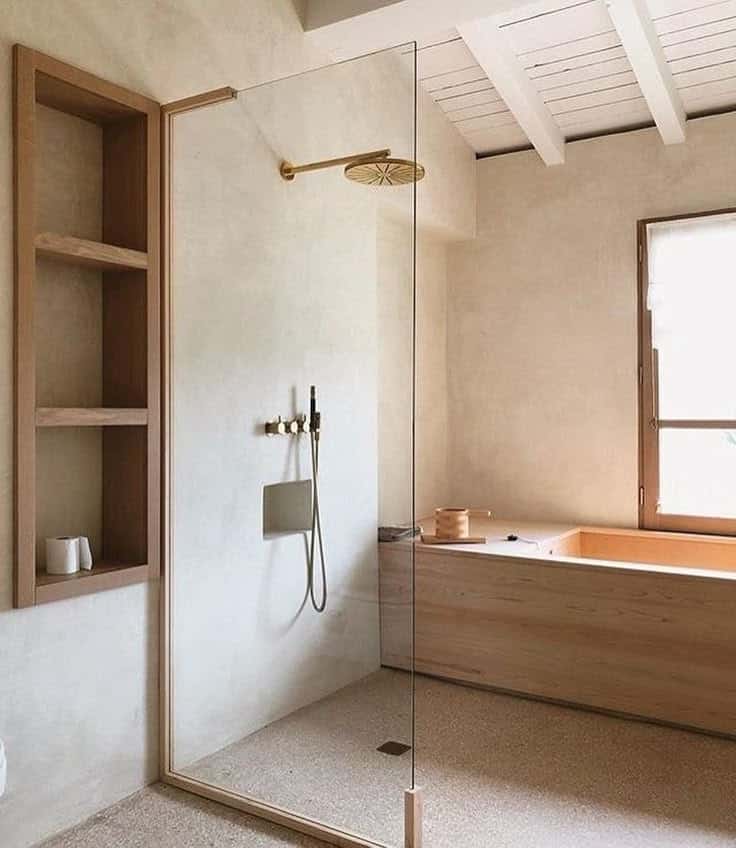
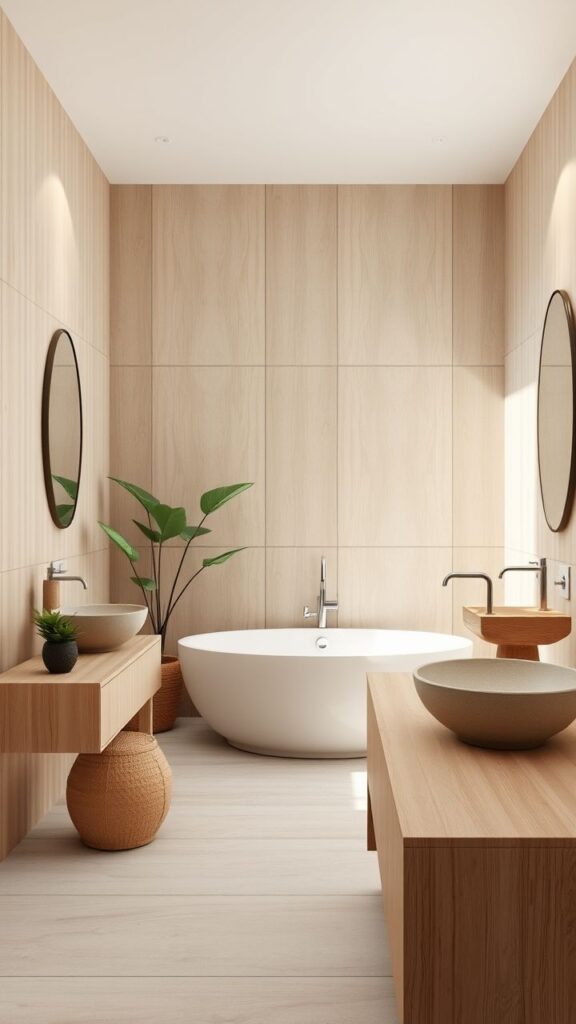
Choosing and Pairing Modern Japanese Bathroom Elements
Bathtub Material Recommendations
For Traditional Enthusiasts: If budget allows, opt for Hinoki tubs, paired with natural stone and solid wood vanities for an authentic ofuro experience.
For Practical Value: Acrylic or stainless steel tubs offer a modern balance between aesthetics and cost-efficiency.
For Small Bathrooms: Deep, space-saving freestanding acrylic tubs paired with wall-mounted vanities maximize both style and function.
Styling Tips
Color Palette: Stick with warm wood tones, off-whites, and light grays. Accent with bamboo green or maple red for seasonal flair.
Soft Decor: Add miniature potted ferns, bamboo bath curtains, or wooden soap dishes to reinforce the Japanese aesthetic.
Integrated Functionality: Custom cabinetry that hides a washer or adds extra shelving helps maintain a serene, clutter-free look.
Closing Thoughts
Japanese bathroom design is more than a trend—it’s a philosophy. With its respect for nature, emphasis on simplicity, and dedication to detail, it transforms the bathroom into a restorative retreat. Whether it’s the warmth of a wooden tub or the ease of modern fixtures, the blend of tradition and innovation offers a sanctuary in the midst of a busy life.
If you’re seeking more ideas for a serene, stylish, and functional bathroom space, be sure to explore Giving Tree Home’s Bathroom Design Blog Series.


